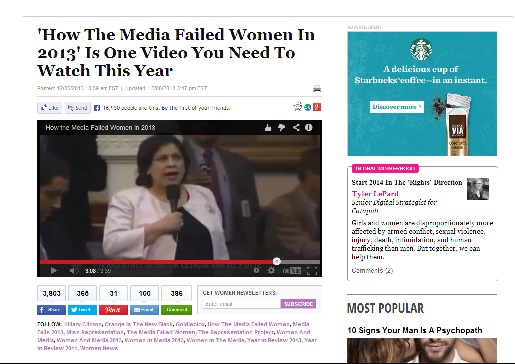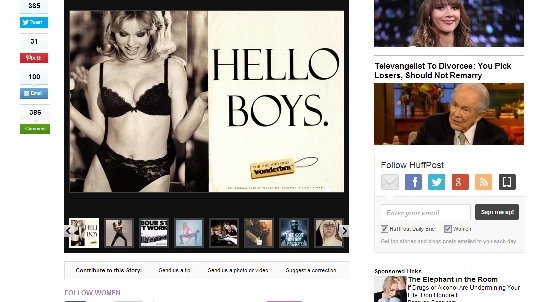Since adding my second major in Gender and Women’s Studies and delving deep into the history of women’s movements and organizing in the United States and transnationally, I’ve come to the conclusion that my biggest interest lies within media representations of women and the female gender. It’s no secret that women are to meet a very strict list of criteria if they want to be perceived as beautiful. It’s the slender figure, the full lips, the vibrant eyes, the voluptuous curves. The white smile, the manicured nails, the silky long hair. The list is almost endless yet every girl in America could tell you what society chooses to accept as beautiful. In a Google image search for “beautiful women”, I found nothing short of the aforementioned list. It’s the sun-kissed skin, of which we can usually see too much, the dimples, and the seductive stares. What’s missing from this picture? Diversity, that’s for certain. All of the women in the image search are white or very, very light-skinned. In the case that a woman does appear of a different race, her features are just exotic enough to be “sexy” but remain subtle enough that she could be perceived as Caucasian. The only women pictured that may weigh more than 125 pounds are those with massive breast implants that might add a few pounds. And, as usual, clothing is relatively absent as well. Why must we need a woman to be naked to judge her beauty?
In my research this semester, I have examined the work of the Action Coalition for Media Education and used the works of Jean Kilbourne and her documentary series, Killing Us Softly, to investigate the inequalities experienced by women in the media daily. Not only are women being portrayed as objects of sex, women are reflected as unable to contribute anything meaningful to current discussions about politics, economics, education, and more. It’s all too common that women are ignored and disregarded for being overtly emotional and the threat of potential feminine infiltration in any national program or policy keeps women out of leadership positions. A recent video put together by The Representation Project serves as the best summation of what I’ve found to be true of women’s presence in the current media. Yes, progress is being made, but not in the areas that matter. The commercials, in particular, that clutter every television station exploit sex appeal and women’s bodies. The worst part? This is what our children are watching — no channel is innocent of such advertising. We act like it’s such a mystery when young girls develop eating disorders, bully others in online forums, or harm themselves. Toddlers and Tiaras prove that no age is off limits anymore — women are subject to sexualization and unethical media portrayal from birth. It’s important to note that men are likewise portrayed as sex objects in the media, but when do you see a woman empowered by a man’s sexualization? Never. The contrary is almost always true.
Not only is actual imagery the issue, it’s the words and even the absence of words with such imagery that causes dramatic misrepresentation of women. The video by The Representation Project includes many political exploits taken out of context and left unexplained to batter the reputations of female political figures. Furthermore, the 3 minute segment features numerous music videos from popular and often idolized singers that exist only to show off a female body. There’s a fine line in the world of feminism surrounding the rights of women to parade and display themselves promiscuously if they so choose because we have the right to do and say what we please in this nation, yet what are these women saying to young fans who do not and will never have the body type shown and portrayed as beautiful and sexy in the music video? The most disturbing of all the examples of misrepresentation for me is the image from a Ford ad that features women bound and gagged in the trunk of the car. While I do not know the context of the image, this depiction is NEVER okay. Immediately following, a comparison of Obamacare to rape? Sexual violation is NOT something to be trivialized in the media and I actually cannot fathom what kind of person would think it appropriate to release such a concept as an effective advertising strategy.
In all of this, there’s something quite tragic about the entire fight for representation. There is a real, rational fear that the people FINALLY talking about this crisis cannot catch up. Media is EVERYWHERE; will it ever be possible to guarantee accurate portrayals across the board? This is unlikely. Below is a screen shot from my computer from the Huffington Post, where I initially watched the video. At the top of the page, the amazing video that addresses everything I’ve studied this semester. At the bottom of the page on the same screen, an advertisement for Wonderbra with the tagline “Hello boys.” We have a long way to go.

